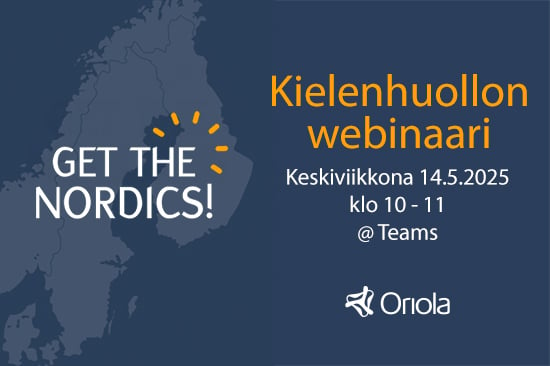The new EU regulation on veterinary medicinal products enters into force on 28 January 2019
24.1.2019
The purpose of the new EU regulation on veterinary medicinal products, which enters into force on 28 January 2019, is to improve the availability of veterinary medicines, encourage innovations and reduce the administrative burden on actors in the field of veterinary pharmaceuticals. The regulation also has significant effects on the marketing authorisations of veterinary medicines. The regulation will be implemented from 2022 onwards, after a three-year transition period.
The field of veterinary medicines has very different needs compared to the field of human medicines. The market is considerably smaller and covers numerous different species, which affects the willingness to invest in the fragmented market. Significant investments are required to extend marketing authorisations to cover other species or indications.
The new EU regulation on veterinary medicinal products is searching for a solution to these challenges. The implementation work that begins after the regulation enters into force will be co-led by the European Commission, the European Medicines Agency (EMA) and the network of national competent authorities (HMA, Heads of Medicines Agencies). The HMA has set up a strategy group to consider the implementation (Task Force on Coordination of the Implementation of the Veterinary Regulation).
“The new regulation on veterinary medicinal products encourages innovations, for example by improving the period of protection of documentation. One of the main goals of the regulation is to allow the EU to take stronger action against antimicrobial resistance. Phased collection of information regarding the use of antimicrobial medications in animals will begin within 2 to 8 years of the implementation of the regulation,” says Senior Regulatory Affairs Specialist Päivi Mannervuori from Oriola.
The EU regulation on veterinary medicinal products also brings significant changes to the marketing authorisations for veterinary medicines
According to Päivi Mannervuori, the most important changes affecting the marketing authorisations for veterinary medicines are the following contents of the regulation:
- The administrative burden of actors in the field of veterinary medicines will be lightened, for example, by waiving the requirement to renew marketing authorisations – in other words, marketing authorisations for veterinary medicines will, as a rule, be granted for an unlimited period.
- The EU wants to simplify the rules regarding changes to marketing authorisations for veterinary medicines by only requiring scientific assessment if a change can impact public health, animal health or the environment.
- For limited markets, a marketing authorisation can be granted based on an application that does not contain all the required information. In these cases, the marketing authorisation is granted on the basis of a benefit-risk assessment. The marketing authorisation can also be subject to specific obligations.
- In immunological veterinary medicinal products, the replacement or the addition of a new antigen or a new strain will no longer be considered as adding a new active substance.
- The use of the centralised authorisation procedure is being consolidated: the centralised procedure will become mandatory for products containing new active substances and products which contain or consist of engineered tissues or cells.
- Generics of veterinary medicines that have been granted a national marketing authorisation can be granted a marketing authorisation through the centralised procedure.
- The access of small and medium-sized enterprises (SMEs) to the centralised authorisation procedure will be facilitated, and their scope for action will also be increased, for instance by providing advice.
- The national authorisation procedure will be maintained. The regulation includes the later recognition of national authorisations and the requirement that a full assessment of a marketing authorisation application should only be carried out once.
- Veterinary prescriptions are valid throughout the Union. Prescription-free veterinary medicinal products can be bought online, and member states can also allow online sales of prescription products based on their own discretion.
- The co-ordination group for competent authorities (CMDv) will produce an annual list of reference veterinary medicinal products whose summaries of product characteristics will be harmonised. The CMDv will also issue recommendations on pharmacovigilance and participate in the signal management process.
The new regulation on veterinary medicinal products, translated into the languages of all EU member states, can be found here.
Our competent Regulatory Affairs team is here to help you throughout the entire life cycle of human and veterinary medicines. Get to know our Regulatory Affairs services here or contact Laura Riihimäki-Lampén, Regulatory affairs Team Lead.

Laura Riihimäki-Lampén
Head of Regulatory Affairs and Translations +358 50 409 9161 laura.riihimaki-lampen@oriola.com


